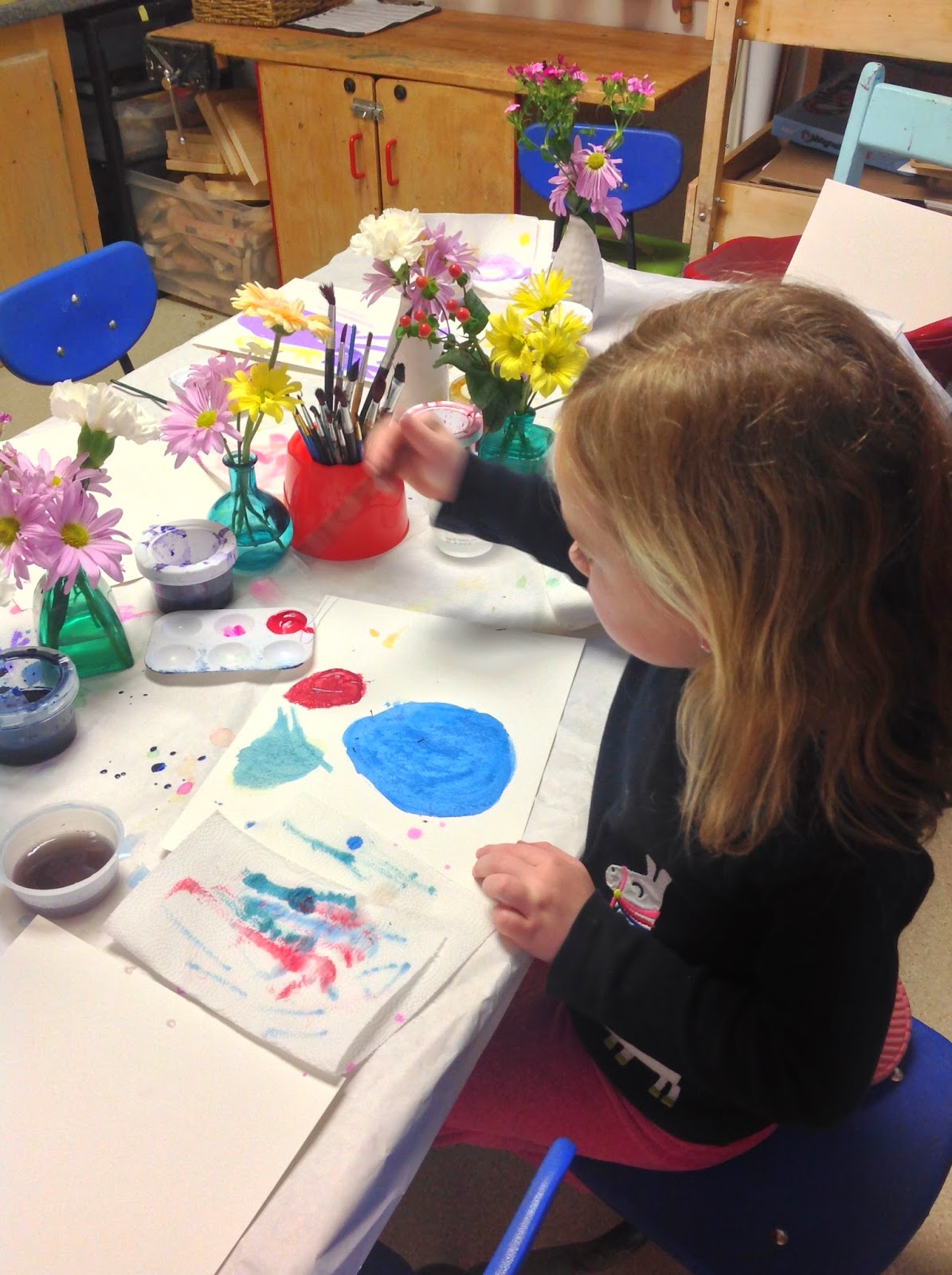Our project explorations tend to be pretty in depth and usually last for several months at a time. We usually get through two projects per year and then have lots of wonderful ordinary moments when we are providing provocations and watching for new interests to emerge from the children.
With only 6 weeks left of school, we were hesitant to start a new project...one of those weeks was our school break, but there was such an insurgence of "dog" play initiated by the children, we felt it was worth exploring.
One of our teachers has a large collection of beanie baby dogs of various breeds. We added a few of these to the dramatic play center. We also set up a provocation center with leashes, brushes, a harness, a dog toy, a choke collar and other dog related items. Most of the children had some experience with many of these materials and had at least seen them before.
The children were very excited by this center. It inspired many discussions with teachers and with each other. The children started using the materials on the stuffed dogs, started using classroom materials to build homes for the dogs and some brought in other materials for play.
Two of the students had recently gotten puppies during our school year and they were often topics of conversation. Their parents also often brought them to pick up time.
To see if this was a topic that could engage all of the children, we did a memory drawing of a dog. It could be about a dog you owned, or a dog you used to have or any time you interacted with a dog at a park or a neighbor's house, etc. Each child had a specific story to tell....which led to more stories.
Then when asked if they had any wonderings about dogs the questioning began.
We filled our classroom with non-fiction books on dogs and puppies.
I wrote to the parents to let them know about our new study to see if they had any connections and to ask for photos of dogs known to their families.
One of the opportunities that arose from this parental contact was from a family in our class that socializes guide dog puppies. The puppies go to three homes for several days each to learn to interact with different kinds of people in different settings. Then they take a test to see if they qualify to be trained as guide dogs. This fit perfectly with our current study and several of the non-fiction books the children found particularly engaging were on working dogs.
On Friday morning we listed our questions specific to this visit and the puppies arrived late morning. We learning about the socialization process and actually helped with several of the things they need to do each day; be held by different people, hear loud noises, explore different places, go up stairs, go down stairs, etc. We also helped to feed them and learned their commands for going to the bathroom. We ended this terrific experience walking them around our playground.
(here we are measuring the puppies compared to a student in order to compare to the older lab coming next week.)
Next week we have a different dog visiting each day; three dogs at different ages as well as a therapy dog and a diabetes aide dog. We are working on a visit to the pound or an animal shelter and a police dog. It is tricky trying to schedule all of this so close to the close of our school year, but the interest is so strong it is important to follow it. Also, since both of our big projects this year just happened to involve vehicles, I wanted to children to experience studying something very different. Our research will be different as well as our representations.
Plus, who can resist the opportunity for some puppy love??















































